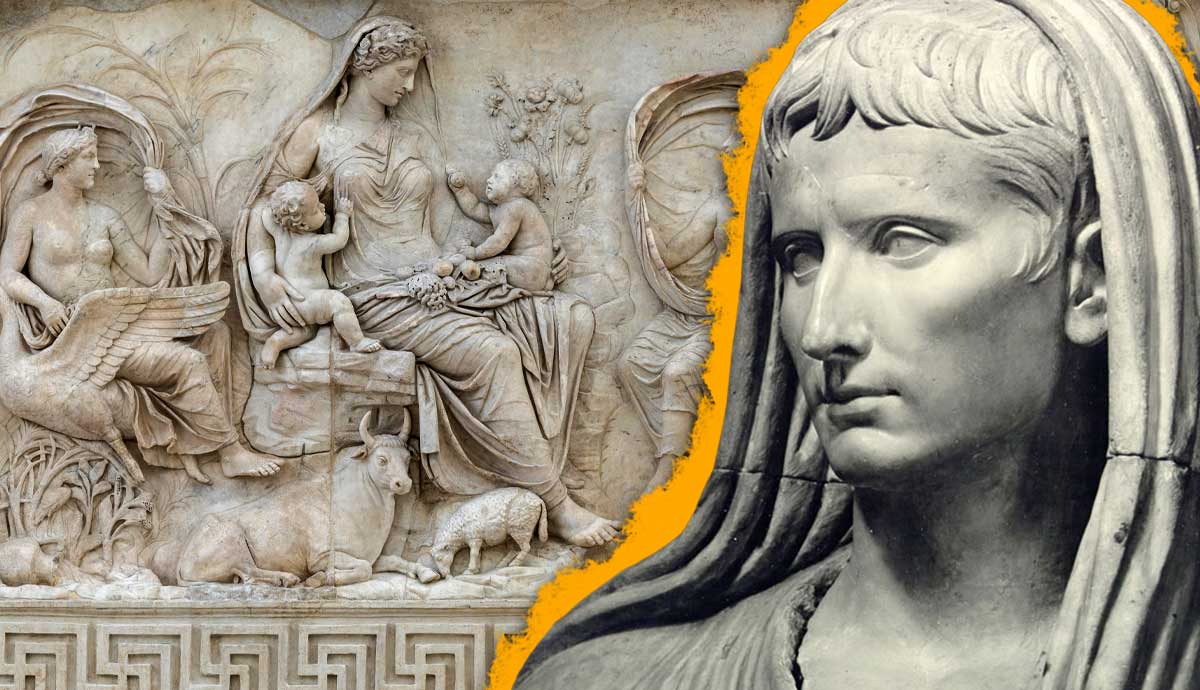
www.thecollector.com
What Was the Roman Empire’s Imperial Cult?
Worshipping a human being as a god is a practice by no means exclusive to the culture of the Roman Empire, especially in the ancient world. Egyptian pharaohs, for example, were considered divine incarnations. Ancient Babylonian rulers were likewise considered the sons of deities, as were the emperors of ancient China. But the imperial cult in Rome is especially significant in western history because of its relationship to Christianity.
Alexander the Great Set a Key Precedent for Emperor Deification
Tetradrachm of Alexander the Great, ca. 325–319. Source: The Metropolitan Museum of Art
Traditional Greek and Roman deities had origin stories in which they began as human beings, which meant that they might have human descendants who could be high-achieving humans. But how high-achieving? Could they also become gods?
One person who thought he could was Alexander the Great. His father, Phillip II of Macedon, made several attempts at self-deification before he was assassinated. He used coins as propaganda, and erected statues of himself in temples. Alexander took these measures a step further by promoting himself in Egypt and Asia Minor as a son of Zeus. According to some historians, Alexander may have been recognized as an avatar of Vishnu by some after he invaded Punjab. He purposefully associated himself with several deities throughout his empire and, following his father’s example, minted coins declaring his divine status. After his death, his successors also followed his example.
Julius Caesar Gained God-Like Authority
Denarius portraying Julius Caesar, 42 BCE. Source: The Art Institute of Chicago
Almost three centuries later, Julius Caesar famously defied the Roman senate when he “crossed the Rubicon” to enter southern Italy with his army. He precipitated and then won the civil war that followed, establishing himself as the first, lifelong, sole ruler of Rome.
Because of the Roman gods’ human origins, it was imagined that they had naturally begotten, fully human descendants. It is not surprising that powerful Romans claimed ascendancy to both gods and goddesses. Julius Caesar’s family saw themselves as the descendants of the god Aeneas, as well as other deities. Such a claim was not unique to his family alone, but it is part of the background needed for understanding why an emperor could be considered divine.
Coin portraying Julius, ca. 38 BCE. Source: The Art Institute of Chicago
Like Alexander the Great, Caesar was addressed in deifying terms during his campaigns in Asia Minor. He pressed this title further by printing coins propagating this idea. He also set up his own image in temple-like structures. Caesar was elected to carry the title of chief priest of Roman religion as well, a title which surely helped to support his divine status.
Augustus Caesar Established the Imperial Cult
Julius Caesar, Perpetual Dictator, from Twelve Famous Greek and Roman Men, Boëtius Adamsz Bolster (after Peter Paul Rubens), ca. 1633. Source: The Art Institute of Chicago
Caesar’s successor was his grand-nephew Octavian. Some of Octavian’s subject in Asia requested formally that they be allowed to build temples to worship him. Octavian did not allow this, probably due to fears that such self-promotion would provoke some in the Roman senate to revolt. Instead, he gave permission for temples to be erected to “Roma,” thus deifying the abstract concept of the Roman Empire. Eventually, precedent was established to worship emperors after their deaths, and Julius Caesar became the first Roman ruler to be officially proclaimed a deity. Thus, Augustus had coins minted that called him the “son of (a) god,” since Caesar had been made officially a god.
Gold aureus of Julius Caesar, 46 BCE. Source: The Metropolitan Museum of Art
In addition to these newly established customs, the office of chief priest became associated with the emperor’s role (though not all emperors accepted it). Thus, the emperor’s role in life would be to represent the Roman people to God, and in death he would receive sacrifices. The practice of worshipping the emperor spread more readily in the Greek-speaking provinces where there was more precedent for veneration of rulers than in the Latin-speaking side of the empire.
What Did Emperor Worship Look Like?
Photograph of Temple of Augustus Caesar in Ankara, Turkey, Matson Photo Service, 1935
Some of what historians record as veneration of the emperors would look like festivals and sporting events from a bird’s-eye view. In honor of a deified emperor, gladiatorial games, communal hunts, races, animal fights, and other spectacles were sometimes sponsored. Animal sacrifices and feasting were also a part of these festivities. Thus, the imperial cult was not necessarily onerous, since it would at least on occasion bring some of the empire’s wealth back upon to its subjects for their enjoyment. Normally, however, the imperial cult consisted of what characterized traditional Roman religion: sacrifices, the burning of incense, and priestly officiation of these in a temple.
The Imperial Cult Is Echoed in Christianity
Lampas with roundels of the image of Christ in benedictory pose, ca. 1550–1650. Source: The Cleveland Museum of Art
The language of the Roman imperial cult may sound strangely familiar to many in western cultures today, and this is due in part to the echo of its language as it is preserved in Christianity. Christians speak of Jesus as being God incarnate, and also of his being the son of God and master of all things. This language echoes Roman imperialism. But unlike the Roman imperial cult, Christianity has its roots in Jewish culture, which has no origin story for the divine, much less for the divine as once being a human being. In declaring Jesus divine, early Christianity sought to subvert Roman imperial claims. While tying their origin to the one, timeless deity of Jewish tradition, they asserted a monotheistic worldview while declaring Jesus the world’s new emperor.










